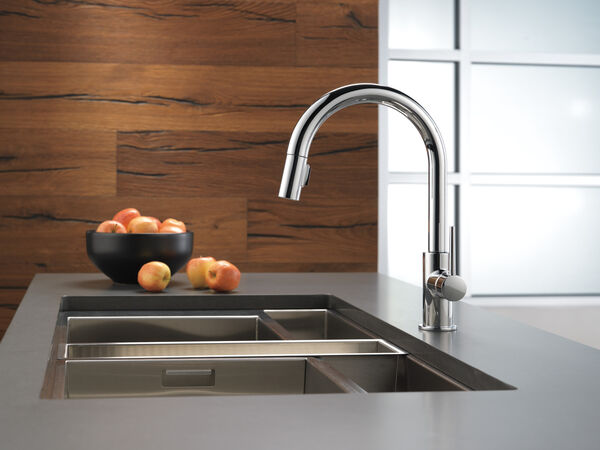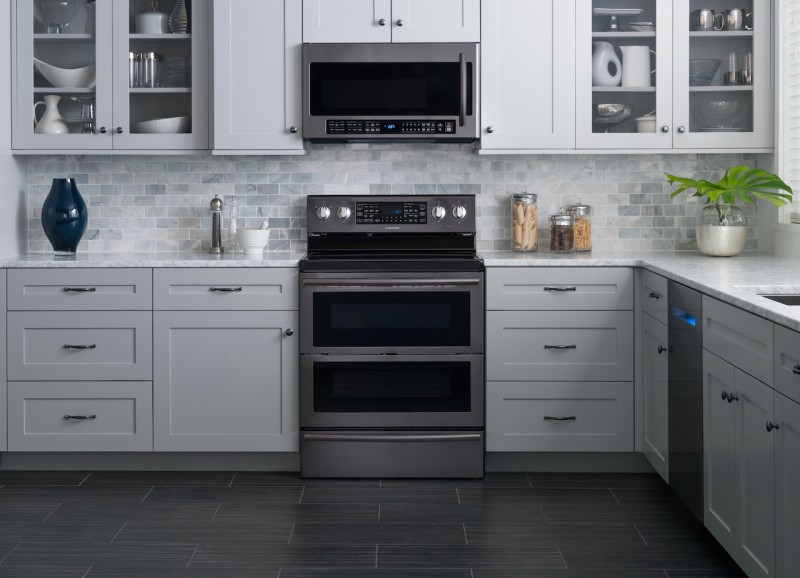The garbage Disposal Unit in the kitchen assists in reducing the amount of food waste that accumulates in your garbage container, as well as the unpleasant odors that may accompany it.
The idea of buying a disposal garbage unit is based on an in-depth examination of factors such as disposal size, grinding power, noise level, and warranty. Electricity and plumbing are necessary for installation throughout the process, which may not suit a DIY project.
Things to Consider When Buying a Garbage Disposal Unit
1. Space
The garbage disposal unit in the kitchen sink processes food waste. They’re in a cabinet under the sink and connected to the drain and trap via a hose. All garbage disposals are intended to fit all kitchen sinks since they all have standard drain hole dimensions of 3.5 to 4 inches.
Most disposals are designed to work with plumbing emptying into a municipal sewage system, although some are safe to use with septic systems when disposing of food scraps.
Some septic systems include cartridges that infuse food waste with natural bacteria to help break down food waste in a septic tank. The citrus-scented cartridge fluid not only helps break down waste in the septic tank but also helps regulate sink and drain odors. Replacement cartridges start at $15 and may last up to six months.
2. Material
The stainless steel components in the higher-end variations will predominate. Stainless steel has a long lifespan, and it will outlast the engine in which it is installed. Certain garbage disposals may feature plastic components that dry up and shatter over time. If you are not pouring large volumes of boiling water down the drain, the plastic parts should not be strained and last for the same time as the engine. Avoid models constructed of galvanized steel since they will erode quickly.
3. Size
The number of horsepowers determines the size of the unit. The amount of power depends on the amount of cooking you do and the number of people that live in your home. Units are available in several sizes. Trash disposals typically have a height of 10 to 15 inches, a width of 5 to 9 inches, and a depth of 6 to 13 inches, depending on the model.
4. Warranty
The manufacturer’s warranties might range from a basic one-year parts warranty to a lifetime parts and labor guarantee. Premium models may include lifetime mechanical and corrosion guarantees, in-home repair, or replacement. Retailers may provide several secondary warranties, each with a different degree of coverage.
Consider the price difference between purchasing new disposal and the warranty fee when considering whether or not to get additional coverage. In the case of lower-priced models, a replacement may be less expensive than extra coverage.
5. Safety
Batch-feed garbage disposals are your best option if you’re worried about the safety of your kitchen’s waste disposal system. If you don’t cover the top of the gadget, it won’t operate. Stopper lids help prevent accidents, which is especially crucial if children are around.
Disposals that work “continuously” (as opposed to batch-feeding) are less secure than those that run “continuously” (as opposed to batch-feeding). Non-food items, such as jewelry or silverware, may be dangerous if they fell into the grinding machine and came into contact with it while it was running. It might be fatal if a hand or finger gets caught in the drain while the engine is running.
6. Durability
In the long run, you’ll save money and time by purchasing garbage disposal from a reputable brand, such as Whirlpool, InSinkErator, or General Electric. Most warranties generally cover long-term dependability.
You don’t want to pay for a new garbage disposal unit after only a few months of using the old one. It’s essential to remember that Motors rated at 1/3 horsepower or less are inadequate for heavy use and will fail sooner than those rated at enormous horsepower.
7. Features
When it comes to selecting a waste disposal system, the size of the engine is the most crucial factor to consider. There are, however, certain additional concerns.
- Garbage disposal brand: InSinkErator, which Emerson Electric owns, is the most well-known trash disposal brand on the market today. InSinkErator’s models may be obtained at practically any online retailer, home improvement chain, or hardware store, making them readily available to a broad spectrum of customers and increasing their market share.
Waste King, Waste Maid, and Moen are some of the other well-known names in the industry. When it comes to warranties and component availability, famous brands are often superior.
- Level of background noise: Distinguishing characteristics of garbage disposals are provided by different manufacturers. If you are concerned about the noise, go for a remover that has nylon-coated grinding components as well as insulated mounting baffles.
- Included with the purchase is a power cord. For the less-priced garbage disposals, the cost of the power line is not included in the pricing. However, if you do not reuse the power wire from the prior removal, you will be required to spend around $15 to get a new one.
Additionally, some versions are intended to be professionally installed with a direct-wire connection to your electrical system, which a licensed electrical contractor must complete. There is nothing wrong with this.
Bottom Line
The optimal garbage disposal unit for you will depend on your budget, the size of your family, and how much food you need to grind daily.
In some of the recent reviews, the trash disposals cost between $50 and $500. Less costly versions generally feature modest motors and a one-year guarantee.
Premium pricing doesn’t necessarily purchase an outstanding performance. Still, it does buy premium features, such as stronger sound insulation, tougher stainless steel components, numerous grind stages, and auto-reversing grinders that help avoid jams.
Disposals come into two categories: continuous-feed and batch-feed.






